Turnkey LCD Design Services
A turnkey LCD solution is a project built so that the end customer is sold a completed LCD product, ready for use. It is our specialty to take on the responsibility for designing and developing a product that is ready to be used upon completion. We have a team of experts ready to take on any challenging turnkey LCD need you have. AGDisplays offers in-house assembly, testing and quality measures, packaging and drop ship capabilities. We are able to accommodate small and large volume production quantities.
LCD turnkey projects involve kitting LCD peripherals and components or just selling commercial off the shelf LCD products that are applicable across all industries.
Products we offer:
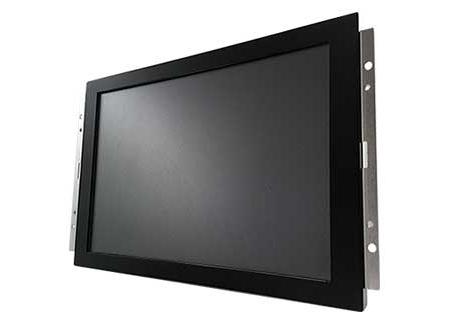
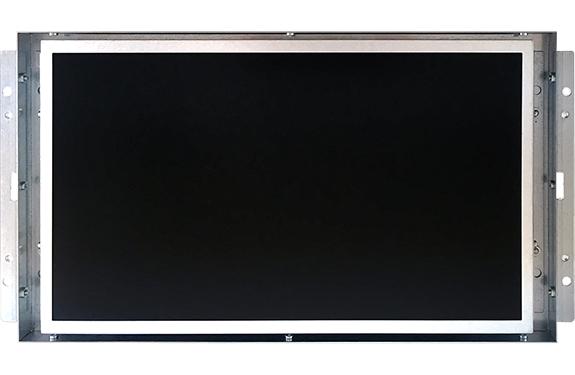
Open and Closed Frame Monitors
A closed frame monitor is described as a monitor with a front bezel that is fully enclosed, just as most consumer grade LCDs are. Many industrial grade monitors are sold with a closed frame. A few examples include multi media kiosks and point of sale terminals. These LCDs are closed in basic enclosures. Most LCDs purchased in this format are not designed to be removed from the enclosures. In fact, they are built with the enclosure as a layer of protection for the LCD, as well as for the practical purposes of the enclosed LCD.
Open frame LCDs are sold as a solution to the need for the absence of the aforementioned enclosure. An open frame LCD is sold as just a raw LCD, capable of having a wide range of sizes, resolutions, and other attributes. The LCD still is secured with a metal chassis cover to protect internal components. The biggest benefit of the open frame LCD is the flexibility to build the LCD into an existing project design. Without the enclosure, an integrator is about to customize design enclosures to match their specific application without working around the LCD.
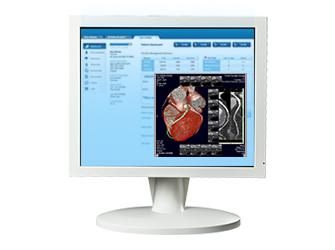
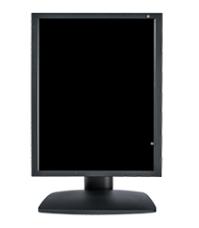
These panels are typically more expensive, as they are often industrial/higher grade LCDs. Higher grade panels have the benefit of increased durability and performance. Another benefit to the open frame LCDs is the ability to and flexibility to insert additional components inside the chassis. Moreover, internal components are easily replaceable if they fail; upgrades are easily installed.
Both open and closed frames are used in project designs and applications across the industries; applications range from retail digital signage, to manufacturing applications to handheld industrial devices.
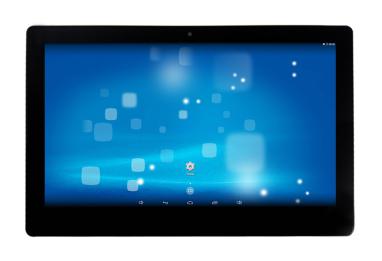
Tablets
Handheld tablets are seen every day with almost everyone owning a tablet or a smartphone. It is becoming more common to see workers in a professional environment using handheld tablets in their line of work, from doctors using tablets as medical databases to manufacturing businesses using tablets on their production floors to keep business running smoothly. By offering a grip into the computing world, tablets have become a reliable, efficient, and cost-effective way to bring connectivity into the hands of employees. The difference between the tablet you have in your hand and the project manager on the floor of a manufacturing warehouse is the industrial components that make an LCD/tablet built for durability versus built for the mass consumer.
Low priced tablets are great for basic functions like data management, while high end devices can do everything that a comparable laptop can do, but with longer battery life and more portability. This ability to drive productivity on the go has given tablet use a major boost in certain industries. Industrial manufacturing, restaurants, retail, and military are all examples of the wide variety of professional applications that a tablet is suitable for outdoor use, by trades from oil riggers to policemen, is a variable that many tablet manufacturers fail to prepare for.
Standard tablets offer very limited protection against the elements, and may be unusable in certain predicaments like a rain or dust storm. Because of these limitations, AGDisplays has introduced a portfolio of ruggedized tablets available for use in non-standard situations. These tablets offer all of the specifications of high-end consumer tablets, but with the addition of features that not only protect the device, but extend its lifespan, and expand its capabilities as well. Some of these features, like military grade components, shock and drop testing, and ingress ratings let a ruggedized tablet far exceed the capabilities of a normal “off the shelf” device. AGDisplays tablets are IP rated, MIL-STD compliant and allow for a range of integrated connectivity options.
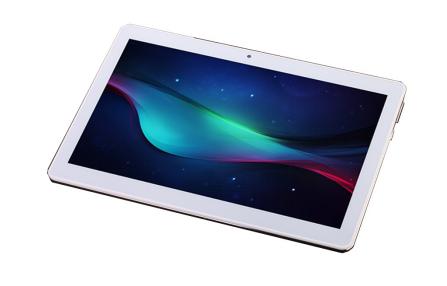
These enhancements are developed through months to years of laboratory research and testing and have a longer overall product lifespan and production cycle than the average 6-month release cycle of consumer tablets. This means that even with a higher potential initial cost, the extra protection and reliability can mean considerable savings in the long run.
AGDisplays’ line of industrial tablets that are designed to work in a demanding and rough environment. With high resiliency and strong performance levels, our tablets are made to withstand constant environmental exposure. Whether your application calls for indoor or outdoor use, our tablet offerings are sure to bring you real-time access to your critical data.
All In One LCDs
All in One LCD displays from AGDisplays can include industrial panels with rack mounting options; included in the LCD panel are robust processing systems, operating system options and memory options. These offerings are design to meet long term demand of high performance PC applications. Many of our all in ones come equipped with touchscreen functionality for ease of access.
What is CPU?
CPU stands for central processing unit; it is responsible for sending and receiving data information, executing instructions, and processing information. The CPU can also be called the processor, microprocessor, and central processor; the CPU is not the monitor, or the hard drive. The CPU has two components: the control unit and the arithmetic logic unit (ALU). The control unit takes the instructions from memory, then decodes and executes them. The ALU handles arithmetic and logical operations.
The CPU communicates with the input/output devices—which is responsible for sending and receiving data to and from the CPU. It contains internal memory units, called registers. These registers hold the data, instructions, counters and addresses used in the ALU information processing.
Sometimes a computer has two or more processors, which are two separate CPUs that may or may not be on the same board. Having multiple processors boosts the computer’s ability to simultaneously manage instructions and process data, increasing performance level.
Operating Systems?
An operating system is the most important user software that runs on a computer. It allows a user to interface and communicate with the computer, without knowing how to speak computer language. It manages the computer’s memory and processes. Since there are several programs running on a computer at one time, the operating system coordinates the programs to make sure they are all accessing the CPU, memory and the storage to run efficiently.
Mounting Options – Flat Display Mounting Interface
VESA mounting (Video Electronics Standards Association) is a set of standards created for mounting flat panel monitors, TVs and other displays to stands and wall mounts. The VESA standard defines the dimensions of a display’s four-hole mounting attachment interface, as well as the screws used to fit the holes. Also defined in this standard are the positions of the holes. VESA MIS-D, 100/75, C compliant displays are equipped with either a 100 x 100 mm or 75 x 75 mm square hole pattern. This is the most common interface for monitors weighing under 30 lbs (14 kg). VESA MIS-E, C compliant displays are equipped with a 200 x 100 mm rectangular hole pattern. Mid-size displays sometimes use this interface; typical displays in this class weigh less than 50 lbs (23 kg). VESA MIS-F, C compliant displays have varied hole patterns that are spaced in 200 mm increments.
Touchscreens
Depending on the technology, touch screens are capable of detecting touches made by a finger or hand, or other passive objects such as a stylus or a pen. A touch screen typically has three components: a touch sensor, a controller, and a software driver. There are multiple touch technologies on the market, each vary in characteristics and features: resistive, surface capacitive, projected capacitive, surface acoustic wave, and infrared. Without touchscreen technology, user speed and accuracy may be insufficient and confusing. AGDisplays designs compatible solutions for existing LCD designs or we also provide a new unit that is touch compatible. Touchscreen types include resistive, surface capacitive, projected capacitive, surface acoustic wave, and infrared.
Other off the shelf products we sell are…
- Digital Signage
- Touchscreen Tables
- Multi Media Kiosks
- Video Walls
- 3D Holographic Displays
- Glasses Free 3D Displays
- Transparent LCD Displays
- LCD Blackboards

Customer Benefits
- Project administration and management control
- Subcontracting
- Focus on the total integrated system
- Considerable experience and skill in panel selection
- Development team that provides options based on budgets
- Quality functionality testing
- Inventoried spare parts
- Focus on procurement efficiency and flexibility
- Experience and expertise in all major industries, applications, and environments
- Quick reaction time, less opportunity for miscommunication
- Hassle-free design changes, as requested
- Cost targets high priority
- Adherence to all US industry standards and specifications
- Regular shipments to destinations around the world
- Comprehensive technician training and familiarity of quality improvement methods
- Complete factory testing prior to shipment
- In-house assembly, testing and quality measures, packaging and drop ship capabilities



